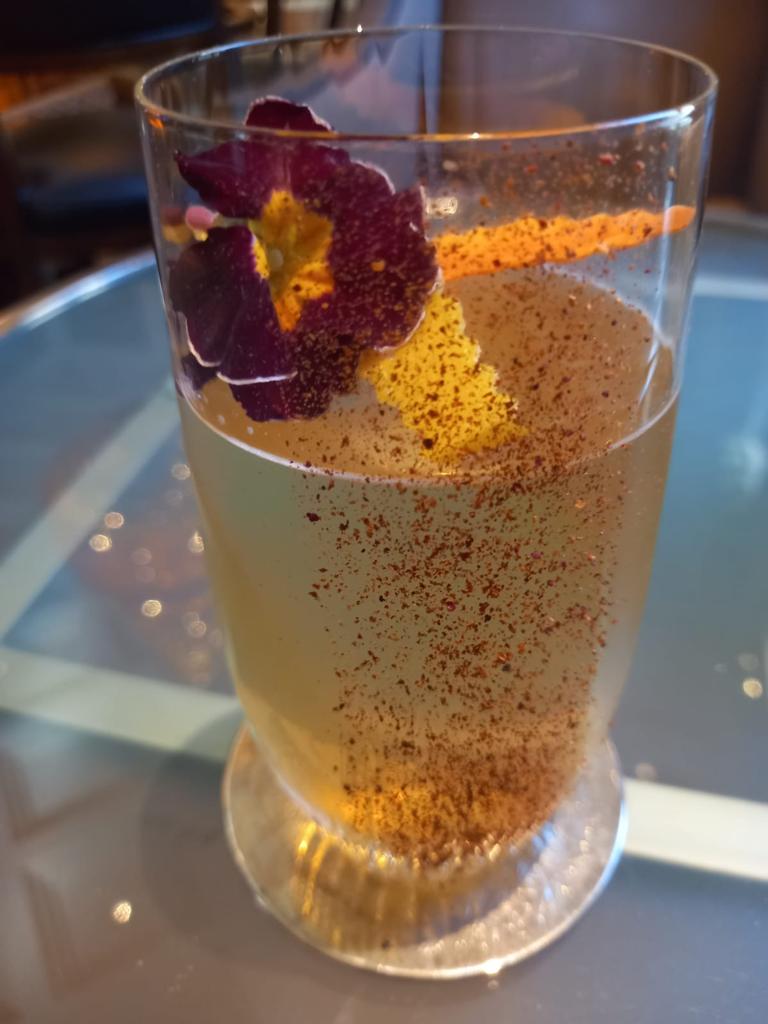Today, December 21st, is the day on which Armagnac is celebrated, the fine French wine distillate, often associated with cognac, despite having its own personality and differing in many aspects from the more well-known product. To find out more about this fascinating world, we interviewed one of the greatest experts on the topic: the bar manager of Orvm Bar, located within the The Westin Excelsior Rome, Luca Di Francia.
What is Armagnac:
Governed by the Appellation d'origine contrôlée (AOC; literally: "controlled designation of origin“, the equivalent of our DOC), thearmagnac is a wine distillate born in the land of Gascogne, in the south-west of France, on the border with Spain. There are three factors that led to its origin throughout history: the introduction of the vine by the Romans in that territory, of the still by the Arabs and of the barrel by the Celts. “This trinomial meant that in 1310 – year in which the first written testimonies are documented, of the abbot Vital du Four of the monastery of Eauze, a city in the county of Armagnac – one of the oldest spirits of the old continent was born. Nonetheless, compared to cognac it is still less known today, because throughout history it has always been produced in a geographical area that is difficult for marketing".
Production areas
Armagnac can be produced in three areas (for a total of 4,200 hectares) united by the “boulbene”, a mixture of clay and silica which gives the soil a reddish-brown colour:
The Armagnac appellation is divided into 3 terroirs:
- West: the Bas-Armagnac (in the Gers and the Landes) or Armagnac Noir, as defined locally, has soils dominated by sand and silt and extensive oak and pine forests, which make the landscape particularly shady. The resulting products are balanced, fruity, rounded and delicate, with a very fine bouquet
- in the center: the Ténarèze (located between Haut and Bas Armagnac) is characterized by calcareous, clayey and very fertile soils. The Armagnacs produced here are persistent and require long aging
- to the south and east: Haut-Armagnac is composed of calcareous and clayey soils. Thanks to the coloring clear of the soil, this area is also called Armagnac blanc. In this area, in which new production realities have been born, the 1% of total Armagnac is produced. The Armagnacs obtained are robust, tense and fine (with a style similar to Cognac) and require long maturation
Grape varieties
Among the ten vines authorized for the production of Armagnac, four are the main ones, which give their personality to the brandy:
- Ugni Blanc: it is our Trebbiano and stands out for its fruity notes of pear and apple
- Baco or Baco 22 A: it is a hybrid grape obtained from the union of Folle Blanche and Noah and created by a teacher from the Landes Mr. Baco. Its use is permitted only for distillation and not for table wine. It is used to add structure, velvety sensations and persistence to drinking
- Folle Blanche: It has floral and elegant notes
- Colombard: very productive grape, fresh and with a typical aroma
The Gascon landscape is an alternation of meadows, cereal crops, vineyards and woods. The proximity of woods, ideal for wines to be distilled, reduces the sugar level, increases the acidity of the bunches, absorbs excess water and protects the vine from the cold at night.

Distillation
L'armagnac it is obtained from the distillation of wine with two types of stills. “The 95% of the products is distilled with an Armagnacais still, a small column still that distils continuously. The 5% of the products is distilled with the Charentaise still, the same as cognac, which works discontinuously”. If in the first case an excellent tasting result is immediately obtained, in the second case it is necessary to carry out a second distillation, in which the first and last vapors (of the head and tail) must be discarded to have a more optimal result.
Distillation is often carried out at the home of the vigneron, the winemaker, with self-propelled stills. Distillation does not have a defined time, but varies based on the type of wines to be distilled. The final objective is to extract all the noble volatiles, which give fruity aromas of plum, grape, vine flowers and lime.
Aging
The phase in which thearmagnac acquires most of its value on the market is the last: aging. The distillate is left to rest in 400 liter barrels, in Monlezun oak wood, coming from the forests of Gascony, or in Limousine wood, a pedunculated oak, which compared to the first has a very large porosity and therefore allows a maturation of the faster armagnac and guarantees a shorter aging time. Based on the age of the youngest brandy – Armagnac is rarely not blended with other Armagnacs – the final product is classified into:
- VS: at least one year of barrel aging
- VSOP: at least four years of barrel aging
- Extra Old or Oldagand: at least ten years of barrel aging

The vintages deserve a special chapter. Unlike wine, in this case Armagnac from a single vintage is not put on the market for the important value of the vintage, but much more often for an emotional event that occurred in that year, such as the birth of a grandchild. “Despite its value, Armagnac still remains a very rustic, local product linked to the territory of origin and to those who produce it. And this is an important testimony."
Consumption and trends
“Today, wine spirits are not very successful in Europe. It is often said that they are difficult to consume but, if the product is of quality, this thesis must be disproved. Now, they are being appreciated a lot in Asia and America, while we tend to prefer what is trendy and what the mass media imposes on us. First there was vodka, now gin and maybe Armagnac one day."

In addition to being tasted straight, even with ice, Armagnac can be used in mixing, to twist classic cocktails whose recipe includes a wine distillate, such as pisco, brandy or cognac. “Having always been seen as a meditation product, Armagnac is difficult to find in classic cocktails, but over the years it has proven to be an excellent ingredient in cocktails too. An example? A Julep, (with a dry cellar Armagnac Dartigalongue) in which it takes the place of bourbon whiskey - my favorite choice - or a Suffering Bastard, in which it is used instead of cognac (a Blanche Un-Oached Dartigalongue armagnac), paired to gin, lime juice, angostura and ginger beer". Or to finish a Sour by replacing the whiskey with one Janneau Grand Armagnac VSOP.

























